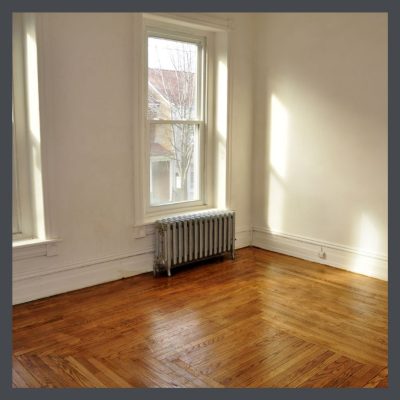 There are several species of wood flooring most commonly found in historic bungalows. I have seen others but the species below are the ones to consider first when you do not know what your floor is.
There are several species of wood flooring most commonly found in historic bungalows. I have seen others but the species below are the ones to consider first when you do not know what your floor is.
It is important to know the species of your bungalow wood floor because different species have different properties & should be treated differently. For example, Maple is difficult to stain while Oak takes stain readily. This article takes a look at these characteristics so that you can determine the species of wood in your house & better know how to restore your floors.
With regard to pictured below of the species of wood flooring found in historic bungalows, realize that the old growth wood that you find in your home, is often harder & darker than newly harvested wood which is what is pictured here. The hardness of the species listed below pertains to newly harvested, mostly farmed wood. And, different finishes change color differently over time, so you can get an idea of your species from the color of the images, but also you’ll need to study the grain patterns.
When I’m referring to staining properties & I state, …”stain & finish application extremely well when the proper techniques are used,” my meaning is that it’s difficult to apply stain color without a great deal of practice, following the manufacturer’s directions to the letter with regard to material preparation, temperature, material & condition of applicator, etc. You can read about different types of finishes here.
I am listing these species by order of popularity, i.e., how often I have seen them used in houses built from 1900-1930.
And, don’t forget to use the GLOSSARY!
THE HARDWOOD SPECIES FOUND IN BUNGALOWS
 White Oak (Quercus alba)
White Oak (Quercus alba)
This is the species of wood flooring most commonly found in historic bungalows in almost all parts of the country.
Color: White Oak’s heartwood is light brown; some boards may have a pinkish tint or a slight grayish cast. Its sapwood is white to cream. In this species you can see considerable variation among boards in both color & grain texture.
Grain: Open. There are several ways to cut the wood from the log, each resulting in a different grain pattern. Most old floors will have combination of grains. A closed grain wood, White Oak tends to be more resistant to water damage than is Red.
Janka Hardness: 1360
Staining & finishing: White Oak’s takes stain & finish application extremely well when the proper techniques are used. It is usually left natural in older houses which displays the grain most beautifully as well as the contrast with other species that might have been used.
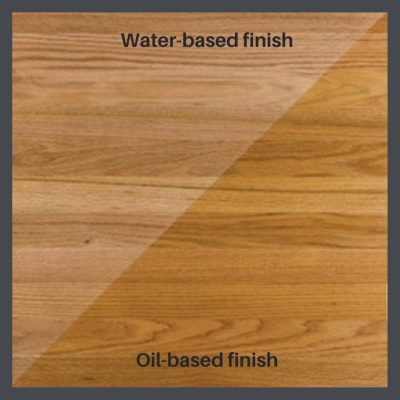 Red Oak (Quercus rubra)
Red Oak (Quercus rubra)
White Oak was used in floors until the 1940’s at which time Red Oak predominated, so your original bungalow floor is unlikely to be Red Oak. However, we have often seen White Oak floors replaced with Red, later additions with Red & we have seen many instances of floors having been patched with the wrong Oak, even by “professionals.”
Color: Red Oak’s heartwood is a light to medium brown, commonly with a reddish cast. Paler sapwood is not always sharply demarcated from the heartwood. White oak tends to have a slightly more olive cast than that of Red, but color alone isn’t always a reliable method of determining the type of oak.
Grain: Grain is straight, with a coarse, uneven texture & large pores. As an open grain wood, Red Oak tends to be less resistant to water damage than White.
Janka Hardness: 1,290
Staining & finishing: Stains easily is but usually left natural in older houses.
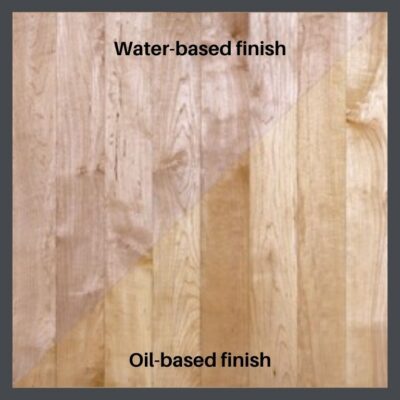 Maple (Acer saccharum)
Maple (Acer saccharum)
Color: Heartwood is creamy white to light reddish brown; sapwood is pale to creamy white. Unlike most other hardwoods, the sapwood of hard maple lumber is most commonly used rather than its heartwood. Over time, even the lighter wood it can darken to brown.
Grain: Closed, subdued grain, with medium figuring and uniform texture. Occasionally shows bird’s-eye figuring. Because of its delicate garining, Maple floors are on the formal side.
Stability: Although Maple is a very hard wood, it does not have great stability, meaning that compared to other woods, it can absorb water more easily & warp.
Janka Hardness: 1,450
Staining & finishing: Very difficult to stain. Old Maple floors were never stained. They were always clear coated. I would recommend that if you like the light color of Maple, that you apply a water-based finish rather than oil. The water does not change color over time while the oil finish ambers.
 Mahogany (Swietenia macrophylla)
Mahogany (Swietenia macrophylla)
Color: Heartwood color can vary a fair amount, from a pale pinkish brown to a darker reddish brown, tending to darken with age. It has an amazing & beautiful 3D look that changes as you look at the wood from different angles.
Grain: Mahogany’s grain can be straight, interlocked, irregular or wavy. It’s tecture is medium & uniform, with moderate natural luster.
Staining & finishing: Stains easily but why would you want to? For centuries fine furniture makers have used it to make grand pieces & also as an accent wood. They did not stain it, but just allowed to glorious color to display.
We saw Mahogany in some of the larger, more upscale bungalows in Los Angeles. This makes sense because an imported wood must be transported from a great distance which adds to the cost. We saw none in Florida.
THE SOFT WOOD SPECIES OF FLOORING MOST COMMONLY FOUND IN HISTORIC BUNGALOWS
These two species below look very similar in color & grain. The best way to differentiate them is by the area of the country in which they are used- Doug Fir in the West & Heart Pine in the East. Both were regarded as more common in these areas to which they were indigenous, & often used in private areas, while the mosre expensive hardwoods were used in the public spaces.
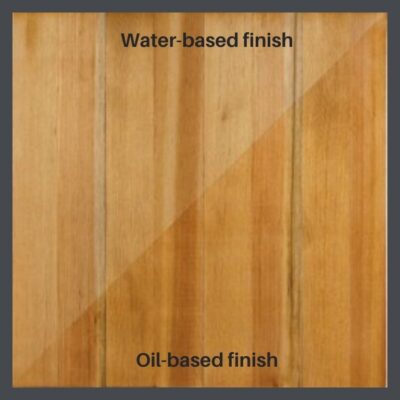 Douglas Fir (Pseudotsuga menziesii)
Douglas Fir (Pseudotsuga menziesii)
Color: Freshly cut Doug Fir’s heartwood is yellowish tan to light brown, while the sapwood is tan to white. Heartwood may be confused with that of Southern Yellow Pine. You can expect radical color change -getting darker & redder- upon exposure to sunlight. When you sand a Fir floor, the floor will become lightener because you are removing the oxidized layer. It will darken again for a period of decades. The sample on the left is more like what you would see after sanding than what you’re likely to see on your home.
Grain: Normally straight, with occasional wavy or spiral texture.
Janka Hardness: 660
Staining & finishing: Takes stain & finish application well when the proper techniques are used, but not as easily as Oak. It will patina to a beautiful rich color. I don’t recommend staining it.
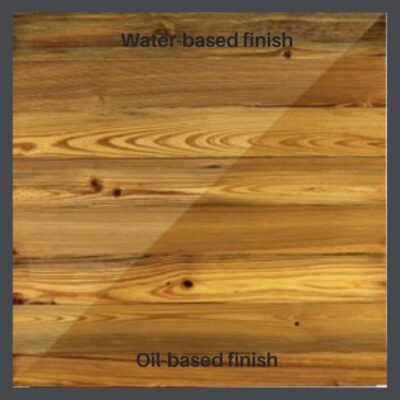 Heart Pine (Pinus palustris)
Heart Pine (Pinus palustris)
Color: Heartwood is yellow after cutting & turns deep pinkish tan to warm reddish brown quickly due to high resin content. Sapwood remains yellow, with occasional blue-black sap stain.
Pine & Fir look very similar to each other each other but Pine is more common in the East & Fir in the West.
Grain: Dense, with high figuring.
Janka Hardness: 1225
Staining & finishing: Takes stain & finish application well when the proper techniques are used, but not as easily as Oak. But please don’t stain your Heart Pine floor. It has spent 100 years developing its beautiful, rich color & even if you sand it, it will turn color again.
TIP: READ A GREAT ARTICLE ABOUT THIS WONDERFUL MATERIAL BY CAROL GOODWIN OF GOODWIN HEART PINE HERE.
 STAY IN THE BUNGALOW KNOW!!!
STAY IN THE BUNGALOW KNOW!!!
Sign up for our newsletter & receive our FREE E-book, 7 VITAL Things to Do Before You Hire a Contractor.



Thank you for showing the realo difference in water based finishes vs traditional oil base. I think many people do not understand the warm authentic amber tones that can only come from the oil based finishes
I agree. I spent several decades explaining this to people who called my wood flooring company & when I retired, I was worried that nobody else would do this. That’s why I blog!